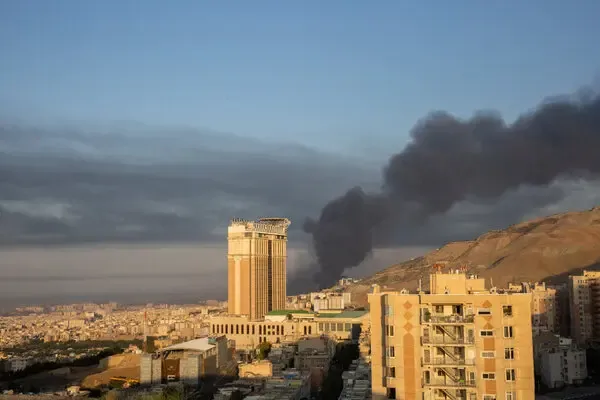Iran-Israel Conflict: Global Markets Face Uncertainty
The escalating Iran-Israel conflict is shaking global markets, impacting oil, stocks, investor confidence, and economic stability in top economies.
vicky
3 min read
18 Jun 2025

Introduction
The Israel‑Iran military escalation that began in mid‑June 2025 triggered immediate ripples across global markets. Stock indices slumped, oil spiked, and safe‑haven assets rallied. As investors digest unfolding headlines and data, the ever‑present uncertainty looms over financial decisions. Here's a breakdown based on real market moves, economic insights, and historical patterns.
1. Stock Market Reactions: A Mixed Decline
U.S. investors reacted swiftly:
- The S&P 500 shed around 0.8%, the Nasdaq dipped nearly 0.9%, and the Dow dropped 0.7% on the first trading day after airstrikes—clear signs of risk-aversion
- Dow futures plunged roughly 600 points following the attacks—a broadly mirrored global sentiment
- European, Asian, and emerging market equities all experienced declines, with Asia’s Nikkei falling about 1% and Europe’s indices following suit .
Markets broadly reacted negatively, with the “risk-off” sentiment dominating as traders sought safety.
2. Oil Spikes: Supply Risk Front and Center
Oil—in the spotlight once again:
- Brent crude jumped 11% after Israel struck Iranian sites, moving from approximately $70 to over $77 a barrel
- A surge of more than 4% occurred in a single day as fresh missile exchanges intensified concerns .
- Iran’s hint at closing the Strait of Hormuz—a critical shipping chokepoint handling ~20% of world oil—threw the market into turmoil
Analysts warn that a prolonged closure could push prices to $100–$150 a barrel, potentially derailing global inflation targets
3. Safe-Haven Rush: Bonds, Gold & the Dollar
When turmoil strikes, investors flee to safety:
- Gold continued its impressive rallies, nearing record highs, as market turmoil deepened .
- The U.S. dollar and Swiss franc appreciated, reflecting defensive asset flows .
- U.S. Treasury returns strengthened, especially the 10- and 2-year Treasuries, as yields dropped on heavy inflows .
Historically, gold and sovereign bonds have consistently offered protection in periods like these.
4. Sector Snapshot: Winners and Losers
Energy & Defense:
- Energy stocks surged, driven by higher oil expectations and central banks pegging inflation
- Defense shares also fared well as military tension prompted anticipated budget rises .
Airlines & Travel:
- Airlines suffered declines of 3–5%, partly due to shattered flight routes following regional airspace closures
Tech & Growth:
- Growth-sector assets lagged as inflation fears and elevated oil dented sentiment
5. Inflation & Central Bank Watch
Escalating events may push up inflation:
- With oil surging, inflation trajectories could get a fresh jolt—forcing central banks to reconsider easing
- Despite tightening rhetoric, the U.S. Federal Reserve has held steady at 4.25–4.50%, though future hikes hinge on inflation developments
- The Bank of England paused at 4.25%, also flagging Middle East pressures as a core risk .
Bottom line: central banks tread carefully, balancing growth and inflation amid fragile geopolitics.

6. Emerging Markets & Currency Impact
Developing nations face sharper immediate impacts:
- India’s rupee slid past ₹86/USD due to soaring oil import needs and weaker risk sentiment
- Other emerging economies experienced capital outflows as global funds sought stability in Treasuries and gold.
More expensive imports, higher inflation, and weaker local currencies pose long-term policy challenges in these regions.
7. Historical Context: Short-Lived Shocks
History shows geopolitical spikes are often short-lived:
- Past Mideast crises (Gulf War, Gaza 2014, etc.) caused brief equity dips but markets recovered once disruptions faded
- The 1973 oil embargo quadrupled prices and led to recession, highlighting long-term disruptions.
- Yet most shorter events saw stocks stabilize after a few weeks
Hence, if inflation remains contained and supply avoids severe disruption, equities may rebound quickly.
8. What Experts Are Saying & Leg Downside Risk
Divergence in analysis:
- Reuters flags worries that full U.S. involvement may trigger steeper declines—stock dips and $100 oil are not off the table .
- MarketWatch counters with a U.S. shale shield: due to stronger domestic production, Middle Eastern oil disruptions are less impactful .
- Barron’s highlights a potential strategy shift: oil and energy equities may offer better short-term hedges compared to bonds or gold
The key: diversification remains paramount amid debate.
9. A Closer Look: Charts & Data
- Oil Price Jump: Brent surpassed $78/bbl—the highest level since January—after just one week of conflict
- Bond Yields & Flight to Safety: It was one of the year's strongest bond rallies, fueled by declining yields
- Stock Index Volatility: Market volatility (VIX) spiked ~15%; S&P dropped ~1%—then recovered as calmer headlines emerged
These patterns align with earlier Middle East-linked sell-offs and recoveries.
10. Investment Strategy Amid This Turbulence
Short-term considerations:
- Defensive Posture: Favor energy and defense; downtilt tech and cyclicals.
- Hedge via Gold/Bonds: Maintain balanced exposure to global uncertainty.
- Watch the Strait: Any real threat to Hormuz needs fast repricing.
- Stay Updated: Geopolitics evolve; so should allocations.
Medium & long-term perspective:
- If conflict de-escalates, expect a rebound in equities alongside possible rotation back to risk assets.
- Persistent high energy costs may sustain inflation, challenging central bank behavior.
- Opportunities lie in cyclical dips amid these reactions—especially in energy, defense, and safe currencies.
Conclusion
In summary, the Israel‑Iran escalation has triggered short-term market turbulence—oil is up, equities are jittery, and safe havens are thriving. Still, history suggests such spikes often fade quickly if disruptions stay limited.
Key moving pieces going forward:
- Whether the Strait of Hormuz is impacted.
- Inflation trends and central bank reactions.
- News cues from military or diplomatic shifts.
If you stay disciplined—diversify, hedge, monitor—this uncertainty may not just be manageable; it could offer potential opportunities.



.jpg&w=256&q=75)
.jpg&w=256&q=75)